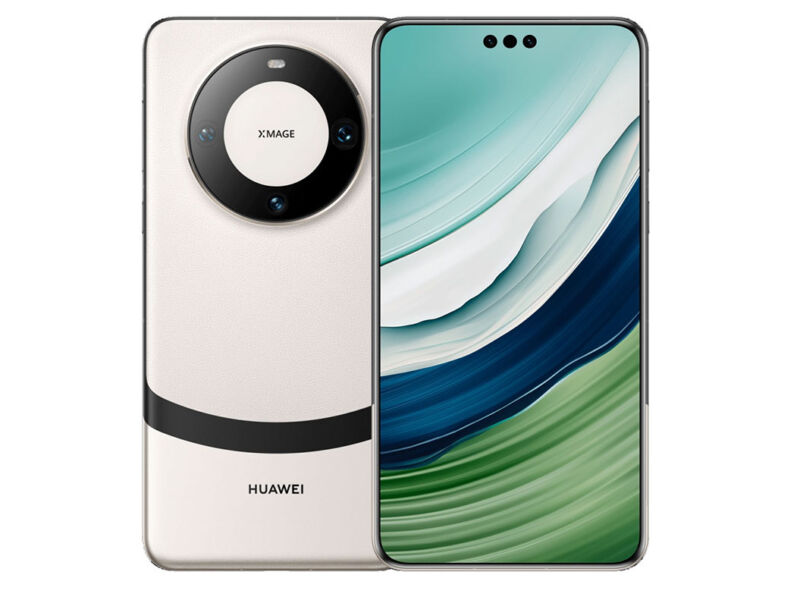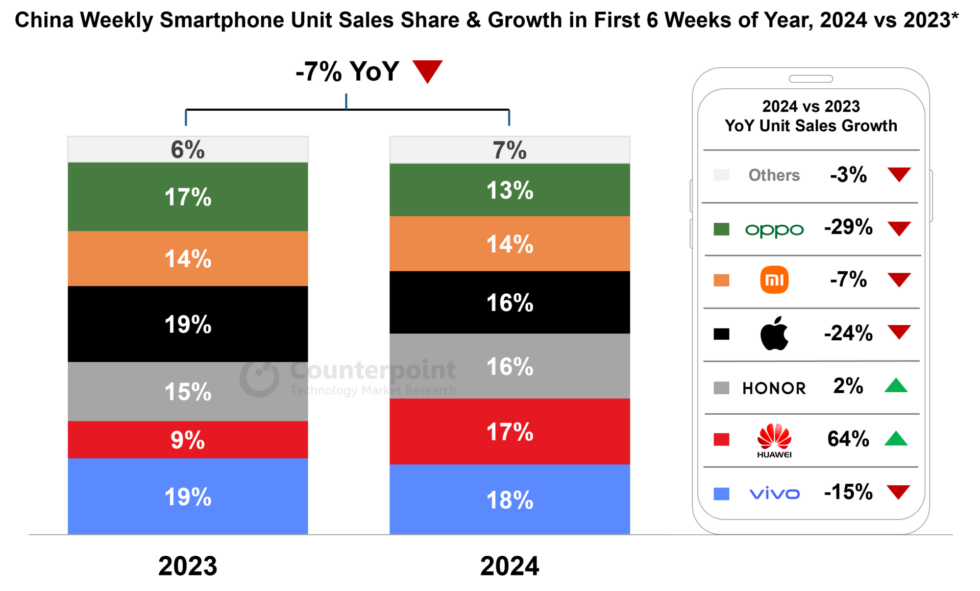
Huawei
Counterpoint Research has an interesting new report on the return of Huawei in China. Market share for the Chinese government’s favorite tech company has shot up 64 percent for the first six weeks of 2024. Counterpoint says this is thanks to “continued demand for Huawei’s Mate 60 series,” Huawei’s first big smartphone release in its US-sanctions comeback tour.
Counterpoint says the market share for the major US incumbent, Apple, has plummeted 24 percent in 2024, allowing Huawei’s 17 percent market share to beat Apple’s 16 percent. For the early days of the year, Huawei is now the No. 2 smartphone manufacturer in China, Vivo is No. 1, and Apple is tied for third with Honor, a Huawei offshoot. I bet the Chinese government is thrilled.
Huawei was supposed to be dead! For a time, the company was crushed by US sanctions, which really kicked in around 2021. The company mostly retracted to China-only distribution and lost most of its market share thanks to dwindling chip supplies. A few years later, Huawei is getting its homegrown ecosystem back in gear, enough to release the Mate 60 Pro, the company’s post-sanctions flagship.

It’s hard to say too much about it because information on the phone is pretty limited. Huawei has proven not to be a trustworthy narrator, and the phone’s China exclusivity means there’s not much in the way of neutral coverage out there. What we do know is that the Mate60 Pro uses Huawei’s in-house chip, a HISilicon Kirin 9000S. Huawei has been building its own chips and modems forever as an Arm licensee, so the chip’s existence isn’t that much of a revelation. This is the first chip Huawei has built post-US sanctions, but even Huawei doesn’t seem to be bragging too much about it, just based on the model number. The original Kirin 9000 chip was released in November 2020 with the Mate 40 Pro, back before Huawei was feeling the effects of US sanctions. It’s now four years later, and Huawei’s chip is still the “Kirin 9000,” just with an “S” tacked onto the end.
Everything we know about the chip makes the 4-year-old name sound pretty appropriate. The big change in the 9000s is the switch from the Western-aligned TSMC chip fab to China’s SMIC, which is also operating under the yoke of US sanctions. Bloomberg tore the chip down and found it was built on 7 nm technology, a far cry from the 3 nm chips TSMC is shipping today in Apple devices. There were always questions about exactly what the yield would be of these chips, but apparently, it’s high enough to enable volume sales.
As for the chip’s actual performance, it doesn’t seem great. GSMArena has benchmarks of the Kirin 9000s in a Huawei tablet, and even the bigger form factor doesn’t help it much. Single-core performance in Geekbench is on par with 2020’s Snapdragon 888. Multicore is better, in between the Snapdragon 8 Gen 1 (2021) and Gen 2 (2022). The performance of Huawei’s “self-developed” HiSilicon Maleoon 910 GPU is the chip’s weakest area, scoring a tier below the Snapdragon 888.
The US originally wanted to limit China to 14 nm chips, but that obviously didn’t work out, and today Huawei and the rest of China are working on bringing the whole tech ecosystem in-house. TSMC’s move beyond 7 nm required a new manufacturing technique called “extreme ultraviolet lithography,” and exporting those machines to China is banned, so moving forward without the right tools, or having to build your own, will be a challenge for Huawei




















+ There are no comments
Add yours